In the fast-paced modern life, diabetes is spreading quietly as a global health crisis. Diabetes is a metabolic disease manifested by high blood sugar, which affects more than 460 million people worldwide. The long-standing hyperglycemia in diabetes leads to damage and dysfunction of multiple tissues, especially the eyes, kidneys, heart, blood vessels, and nerves. Diabetic ulcers and wounds are one of the most common, serious, and costly complications in people with diabetes. Generally, non-healing wounds caused by diabetes are divided into two types: the first is ulcerative wounds, such as diabetic foot and diabetic pressure ulcers (bedsores), and the second is non-ulcerative wounds, which are superficial wounds that do not heal.

Diabetic ulcers have attracted much attention in recent years due to their high morbidity and mortality. Diabetic foot is the leading cause of amputation and disability. According to statistics, a lower limb amputation occurs every 30 seconds due to diabetic foot. Developing a painless, non-invasive, and faster method of diabetic wound healing is at the forefront of research. The scientific community has developed a variety of strategies for treating high blood sugar. Unfortunately, the therapeutic effects of most methods are severely affected by invasive bacteria and the inflammatory microenvironment. The overuse of antibiotics and the consequent bacterial resistance also pose treatment challenges.
Why should diabetic patients pay special attention to wounds?
Diabetic wound healing is a highly complex physiological process that is difficult to manage, and there is still no ideal treatment plan.
- Hyperglycemia (high blood sugar) induces terminal vascular lesions, resulting in insufficient nutritional supply to the wound and making it difficult to recover.
- Diabetes causes a decrease in peripheral nerve sensitivity, resulting in poor control of itching intensity and damage to the wound.
- Sugar-rich wounds are conducive to bacterial growth, and persistent infections delay wound healing.
Due to the abnormal levels of blood sugar metabolism in the body, once ulcer wounds appear on the body, they are difficult to heal and may even lead to amputation.
Faced with such a wound that is difficult to heal, is there any effective therapy?
Red light therapy could support the healing of diabetic ulcers and wounds:
Red light therapy involves shining low-power red and near-infrared, pure, and uniform bioactive wavelengths through the skin. This process is not painful and invasive because it produces no heat. Red light can be directly absorbed by the skin at a depth of around 8 to 10 millimeters, positively impacting cellular energy, metabolic processes, and the nervous system by photobiomodulation. This type of light is considered low-level because it has a lower energy density than other forms of laser therapy.
A beam of red light to treat diabetic ulcers? It sounds incredible, but the advent of science has made it possible.
A 2020 case study evaluated the effect of self-administrated red light treatment on 84-year-old type 2 diabetic women with leg ulcerative lesions and observed that.

Similar findings were also reported by a clinical trial conducted on 30 diabetic patients with grade-I foot ulcers treated with both low-level laser therapy (LLLT) and conventional therapy. Studies reported,
Red light therapy is a promising technology that could support the healing of diabetic ulcers and wounds by altering various cellular and molecular processes.
Wound Healing and Tissue Repair
Most laser treatments use intense pulsed light to promote skin regeneration by indirectly inducing secondary tissue repair that damages the epidermis or dermis. Red light therapy bypasses this initial destructive step and directly stimulates wound repair and regeneration by increasing cell proliferation, migration, and adhesion. It increases collagen production and hastens wound closure by regenerating fibroblasts and immune cells (mast cells, neutrophils, and macrophages).
Improve microcirculation
Red light therapy increases the microcirculation of the blood vessels around the lower limbs, nourishes the nerves, and augments the blood supply to the whole body's tissues. It directly enhances the ability of capillary regeneration, nerve repair, and the growth of granulation tissue.
Anti-infection
Low-level laser therapy has anti-microbial functions against various bacteria, fungi, and viruses. It controls the rise of inflammation and the spread of infection by stimulating reactive oxygen species (ROS).
Reduces pain
Studies have shown that red light triggers the release of endorphins (natural pain-relieving compounds) and modulates pain receptors by reducing the pain signals in the body. It is suitable for anti-inflammation, and analgesia can stop the exudation of body surface wounds.
Final Thoughts
Red light therapy has made good progress in the treatment of diabetes wounds. The use of red light is not only a good way to prevent the occurrence and recurrence of diabetic ulcers, but it could also reduce the risk of complications like amputation. It is a safe and cost-effective therapy that improves patient's quality of life. In addition to wound healing, further research is needed to explore the potent uses of red light therapy in managing diabetes. Bestqool high-tech red light therapy device could be a valuable addition to diabetic patients' lives to solve the serious problem of non-healing wounds and restore health.
References and Citations
[1] Oliver, T. I., & Mutluoglu, M. (2023). Diabetic Foot Ulcer. In StatPearls. StatPearls Publishing.
[2] Merigo, E., Tan, L., Zhao, Z., Roca, J. P., & Fornaini, C. (2020). Auto-Administered Photobiomodulation on Diabetic Leg Ulcers Treatment: A New Way to Manage It?. Case reports in medicine, 2020, 7428472.
[3] Mathr, R. K., Sahu, K., Sarf, S., Patheja, P., Khan, F., & Gupta, P. K. (2017). Low-level laser therapy as an adjunct to conventional therapy in the treatment of diabetic foot ulcers. Lasers in medical science, 32(2), 275–282.
[4] Sutton, E., Ganie, S., Chan, C., Kaur, A., & Nussbaum, E. (2021). Photobiomodulation and diabetic foot and lower leg ulcer healing: A narrative synthesis. Foot (Edinburgh, Scotland), 48, 101847.
[5] Dungel, P., Sutalo, S., Slezak, C., Keibl, C., Schädl, B., Schnidar, H., Metzger, M., Meixner, B., Hartmann, J., Oesterreicher, J., Redl, H., & Slezak, P. (2023). Wavelength-Dependent Effects of Photobiomodulation for Wound Care in Diabetic Wounds. International journal of molecular sciences, 24(6), 5895.



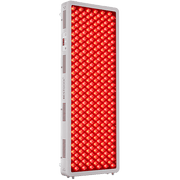








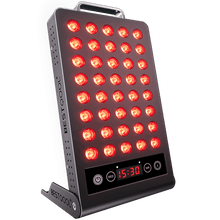
 Small
Small
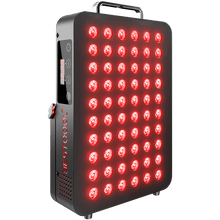
 Moderate
Moderate
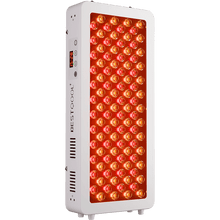
 Moderate
Moderate
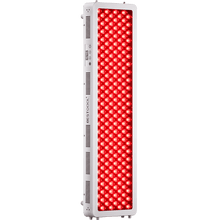
 Moderate
Moderate
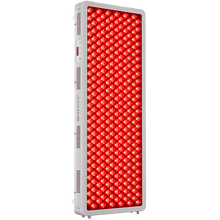
 Full
Full



